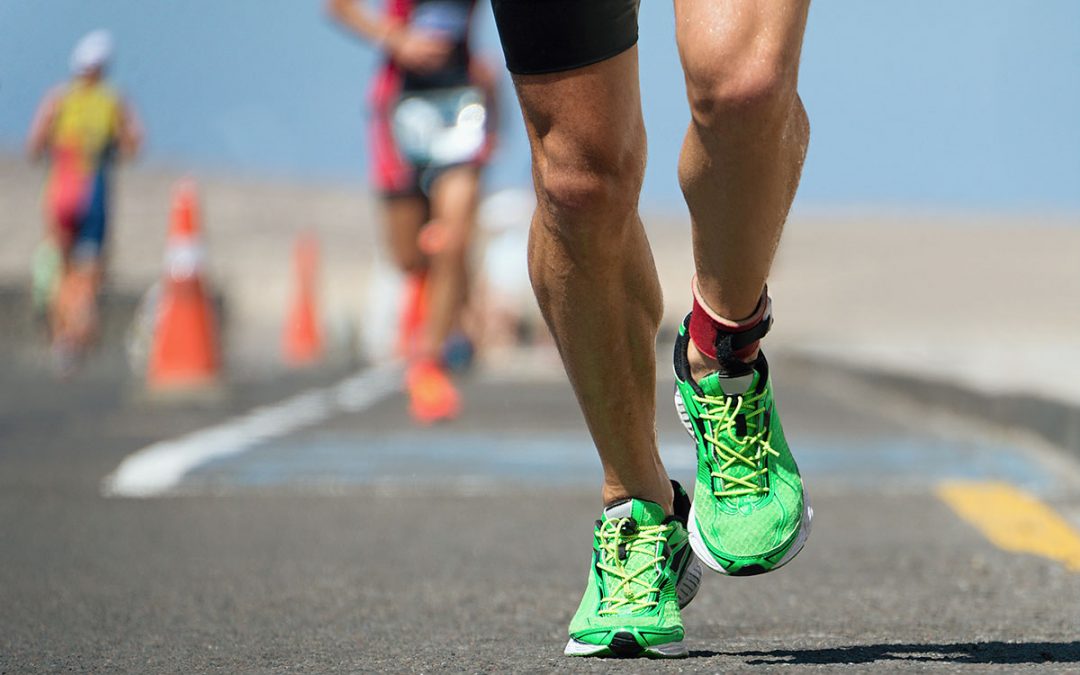Our last blog post touched on the “elasticity” within the lower legs, and how this spring-like mechanism acts like a coil to propel you forward. The tendons in your lower legs and feet (such as your achilles and plantar fascia) store energy when your foot strikes the ground. That energy is released a split second later when your foot pushes back against the ground, propelling you up and forward.
The tendons in our ankles, calves, and feet save a lot of energy that our muscles would have to generate otherwise. However, tendons aren’t the only thing working like springs when you run.
Think of Your Muscles As Springs that Return Free Energy When they Uncoil
When you run, your muscles are also acting like springs. Energy is stored in your muscles as gravity slams your feet to the ground, and that energy is transferred into forward and upward motion when your muscles push back against the earth, just like a spring that is compressed then allowed to release.
When we talk about the elasticity of muscles, running experts often refer to this as “tension” or “stiffness.” Because there are a lot of negative connotations about the word “stiffness,” muscle tension is often preferred. After all, the stiffness of a muscle such as not being able to touch your toes is not what we’re talking about here. We’re talking about the ability that your muscles have to store kinetic energy when they contract, and how quickly that energy can be released for an efficient foot strike, reducing the time that your foot spends on the ground and therefore increasing your speed and efficiency.
How to Improve Muscle Tension
Now that we have reviewed how important muscle tension is to running economy and speed, how does one improve upon this vital, yet often unheard of biomechanical mechanism?
There are a few ways to make this happen, which can be sprinkled in throughout weeks of training, or incorporated a few days before a race to top off your speed. In general, the shorter the event, the more necessary muscle tension becomes. Being “flat” for a 400 meter event will ensure last place every time for a track runner, while being flat for a marathon within a triathlon may not be quite as detrimental. However, manipulating your muscle tension can be beneficial for all distances and all levels of athletes.
The following exercises can help increase muscle tension:
- Running on hard surfaces like concrete (as opposed to asphalt);
- Sprints of 40 to 80 meters. Take plenty of rest between sprints since the goal is not necessarily to stress your other systems;
- Skips and running drills such as carioca, bounds, and high knees;
- Plyometric workouts including jumps, box jumps, and hops. Hop down from a short box or step and spring upwards quickly, minimizing the time your feet are in contact with the ground; and
- Ice baths.
Muscle tension can be built and maintained throughout a season, allowing you to run faster during intervals and workouts. However, when you’re in recovery mode after a race or during the off season, you will want to decrease muscle tension with stretching, yoga, pilates, massage, and warm baths.
Increasing Muscle Tension Before a Race
Unlike a pure running event, because there are so many things to train and prepare for leading up to a triathlon, we do not recommend going all out the week or two before a race trying to improve your muscle tension. The week before a race, you should focus on reducing your hours, taking a few easy/short days early in the week, and opening back up mid to late week. A short and sweet track session should be performed on Wednesday or Thursday, and the day before you should do 4-6 strides during a 15-20 minute run.


